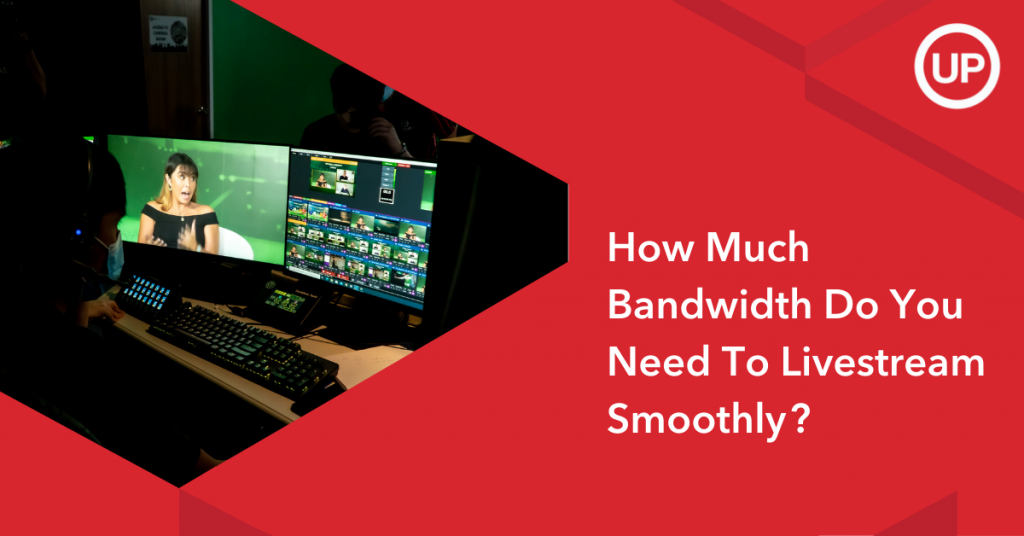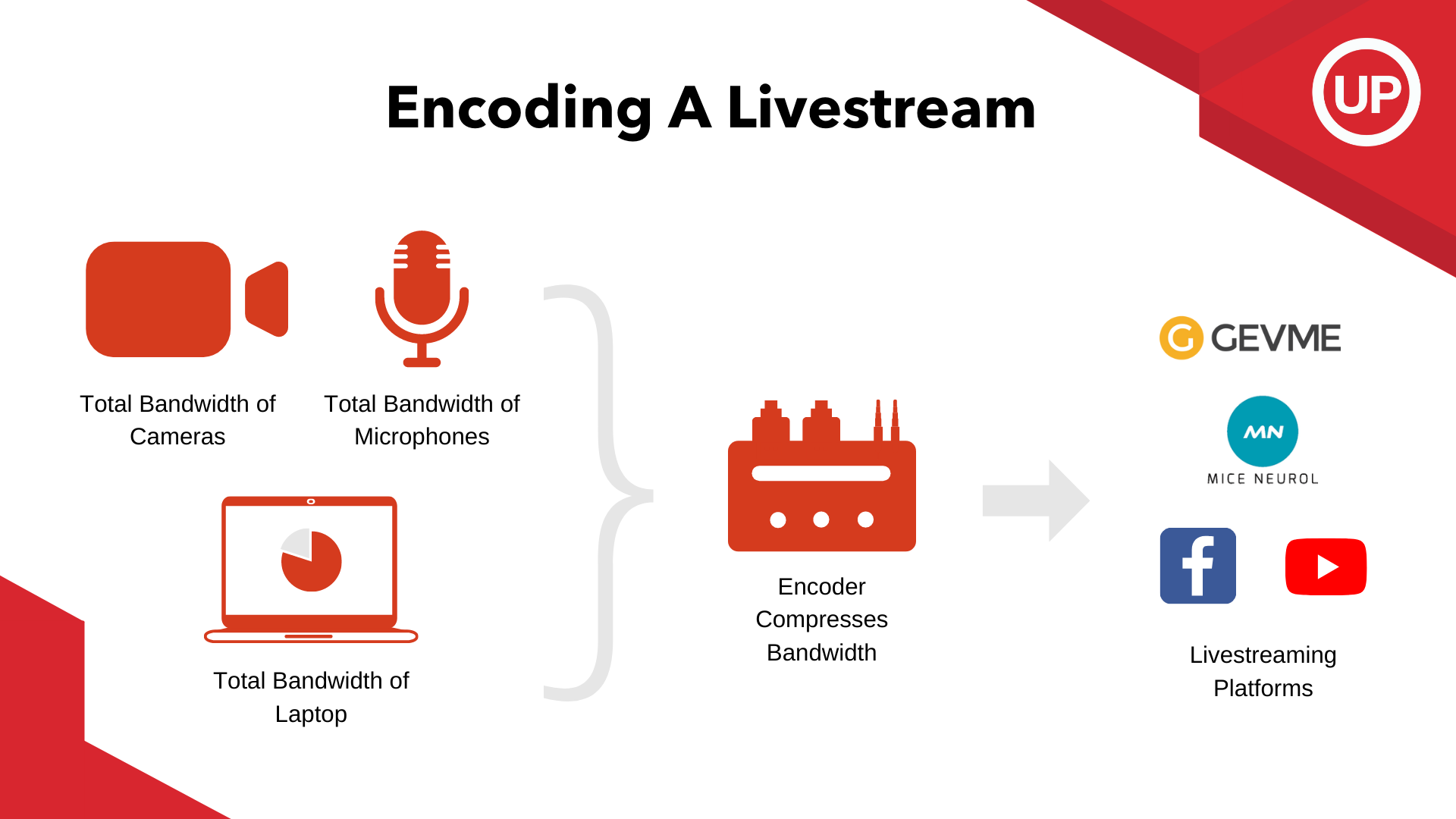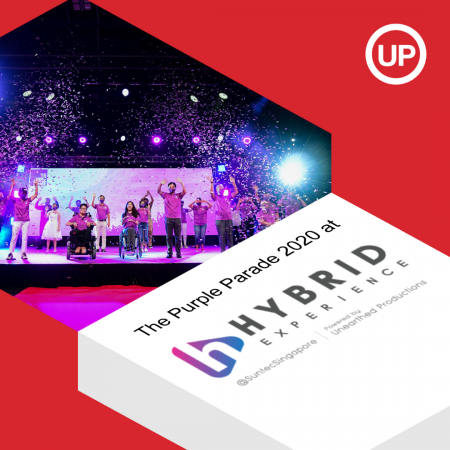
A passionate emcee. Sufficient lighting. Motion graphics. These are all factors that contribute to a successful livestream. But they will count for nothing if you can’t stream out your event smoothly. This occurs when you don’t have enough bandwidth.
So how much bandwidth do you actually need to ensure a lag-free livestream? The answer is … it depends! In this article, we look at the different considerations such as your output resolution, your network activity and the type of Internet network you’re on.
But First, What is Bandwidth?
In short, bandwidth is your Internet speed. It’s measured in megabits per second (Mbps) and categorised into two types, namely download bandwidth and upload bandwidth. Streaming out an event consumes upload bandwidth, so that’s what you want to focus on.
Although the bandwidth that you have is set by your Internet service provider, it can still vary wildly at different times throughout the day due to a number of factors (we’ll get to that bit in a while). An online tool that we like to use to get the best estimates of the available bandwidth at a venue is https://www.speedtest.net/.
Can You Control How Much Bandwidth Your Livestream Uses?
Yes. Now that you have ascertained your available bandwidth, you should aim to work within that limit. Overshooting it can result in a jittery livestream!
However, every piece of equipment used to record your event – from the cameras to the microphones – and the laptop with a PowerPoint presentation that’s part of your livestream consumes huge amounts of bandwidth. Before your livestream reaches your audience, it’s essential to compress the data from these sources.

This process is known as encoding and performed by either a software encoder or a hardware encoder. Like its name suggests, a software encoder (like the free open-source OBS Studio) runs on a computer. The risk is that the software encoder may get bogged down by other applications running on the computer, limiting its usability.
On the other hand, a hardware encoder is a dedicated device that can easily process enormous amounts of bandwidth from multiple sources. Our studios are equipped with the Blackmagic ATEM Mini Pro, which gives us the flexibility to capture your event from four different cameras and create a more dynamic livestream.
You Still Need More Bandwidth If ...
You Want to Livestream At a Higher Resolution
Most of our clients opt to livestream at 1080p (Full HD). While there are arguments to be made about livestreaming at 720p (HD) or 2160p (4K), a 1080p resolution strikes the perfect balance between presenting a clear-enough picture to your audience members and devouring their data caps, especially if they’re on the go.
There isn’t an industry standard for the exact amount of bandwidth you need to pull off a 1080p livestream smoothly, but we generally encode it at 50 Mbps. A 2160p livestream can require more than thrice the bandwidth, making it demanding for even the fastest networks.
You Don't Want to Be Sidelined By Network Fluctuations
As we talked about earlier, the bandwidth that’s available to you isn’t fixed. Instead, it’s dependent on other activities on your network. If someone is engaged in a video call, uploading a file or playing an online game, you’re inevitably going to get a lower bandwidth.
“I recommend you to always have around 1.5x your livestream’s bandwidth available, so there’s enough headroom to account for network changes,” Danial Piperdy, Technical Director at Live Productions, says. Live Productions is the technical arm of Unearthed Productions. This means a 1080p livestream encoded at 50 Mbps would require 75 Mbps of available bandwidth.
Lay off the Wi-Fi connection
Another chief concern is network interference, which can arise when Wi-Fi access points are placed too close to each other. Other devices such as microwave ovens, cordless phones and wireless security cameras can also interfere with your Wi-Fi connection. Danial recommends using a hard-wired Internet connection.
These were the principles we had in mind when designing Hybrid Experience @ Suntec Singapore as a secure destination for conferences, AGMs, award ceremonies and other closed-door events. Apart from a hard-wired Internet connection, the 800 Mbps network at the studio is protected with a static IP address to prevent unauthorised access.

The result is a dedicated, fluctuation-free and ultra-fast network that has seen Hybrid Experience @ Suntec Singapore host several important events such as the The Purple Parade 2020, STB’s annual Tourism Industry Conference, the SG:D Techblazer Awards and the Mother Tongue Languages Symposium 2021.
You Want to Livestream to Multiple Platforms
Multi-streaming has gained popularity in recent years, not least because it enables our clients to reach out to a greater audience. For example, the NDP 2021 official livestream was on both YouTube and Facebook, where it captured 256,000 and 53,000 viewers respectively.
While the benefits of multi-streaming are numerous, it’s important to note that each additional livestream you publish adds to the bandwidth needed. Again, you want to check if you have enough bandwidth at your venue to support multi-streaming.
Our Experience Managers are on hand to help you take the fuss out of organising and running your hybrid or virtual event, whether it’s a webinar, a conference, an AGM, a town hall meeting, an award ceremony, dinner & dance or a product launch.
Create your next hybrid or virtual event experience with us today! Book a complimentary consultation or contact us at +65 8201 4088 (WhatsApp) or at +65 6242 8032 (Call).
Our studios:

